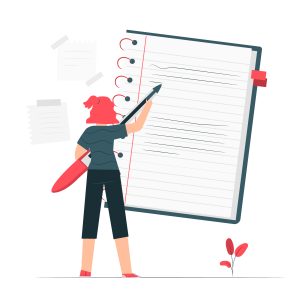19 Note-Taking Skills
Careless note-taking is one of the major factors in unintentional plagiarism. It is quite easy to cut and paste information and lose track of the sources you used or mix what you borrowed with your own notes. As you read your sources of information, it is important to find a system for writing down the key points that you will use in your paper.
Key Takeaways
When taking notes:
- Keep track of all the sources you use
- Distinguish between what you took from the sources and your own thoughts

Three methods of taking notes
- Collect information word for word
- Collect and paraphrase right away
- Take notes using an app
Collect information word for word
- Write down the citation information
- Copy the exact text and put it in quotation marks
- Add your own thoughts in a different color
When you want to use your researched information to support your point of view, you then decide whether you want to use a direct quote, a paraphrase, or a summary of the original. Having the originals in front of you will allow you to double-check that you are quoting accurately and paraphrasing properly.
Collect information and paraphrase right away
- Write down the citation information
- Paraphrase
- Add your own thoughts in a different color
Use an app
If you prefer online files, you may want to take notes with an app such as OneDrive, Google Docs, OneNote, etc.
- Paste the file you are reading into the app
- Make notes of key information, paraphrases, and analysis alongside the digital file

